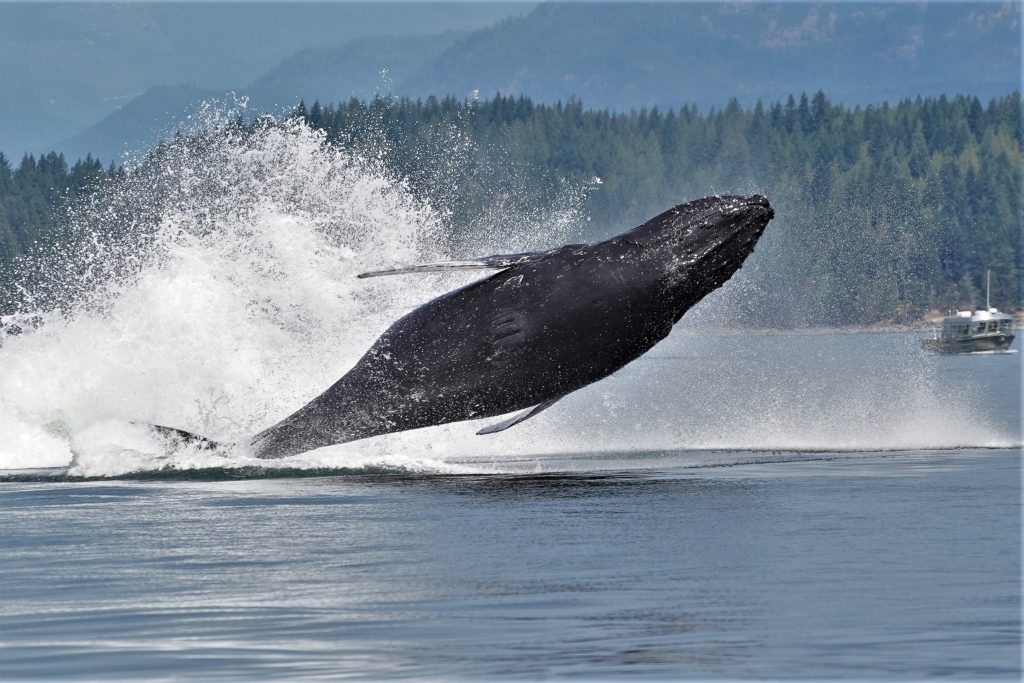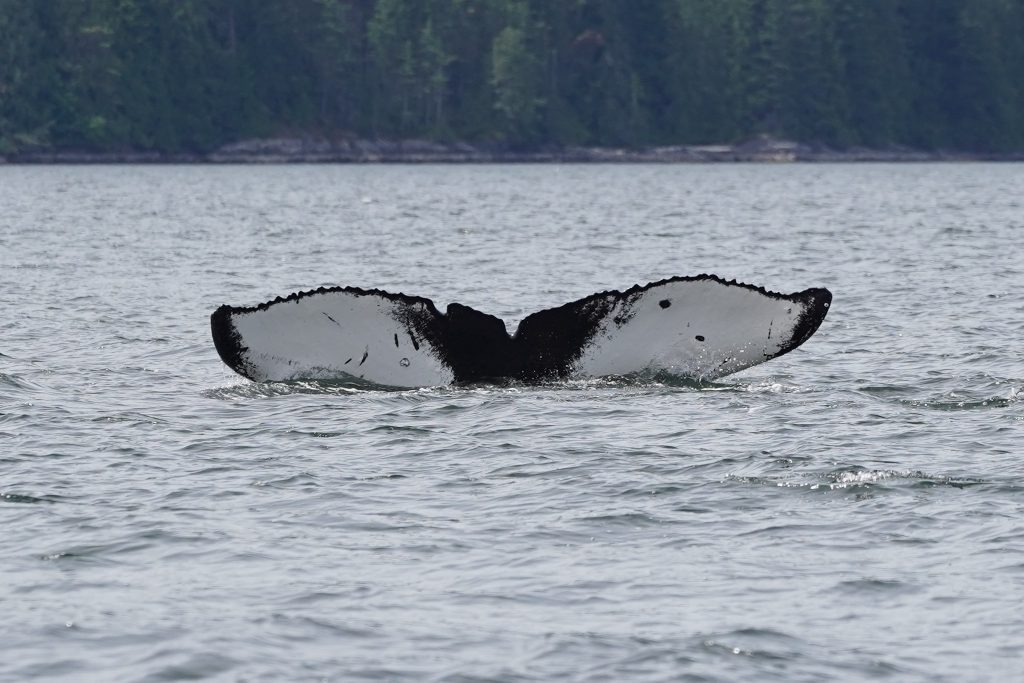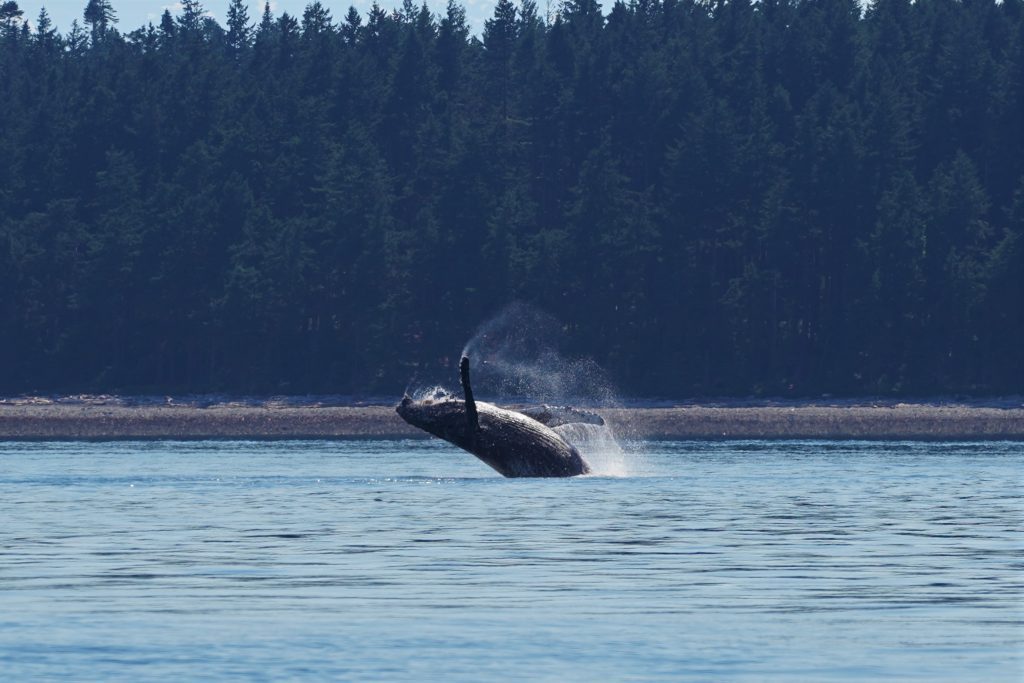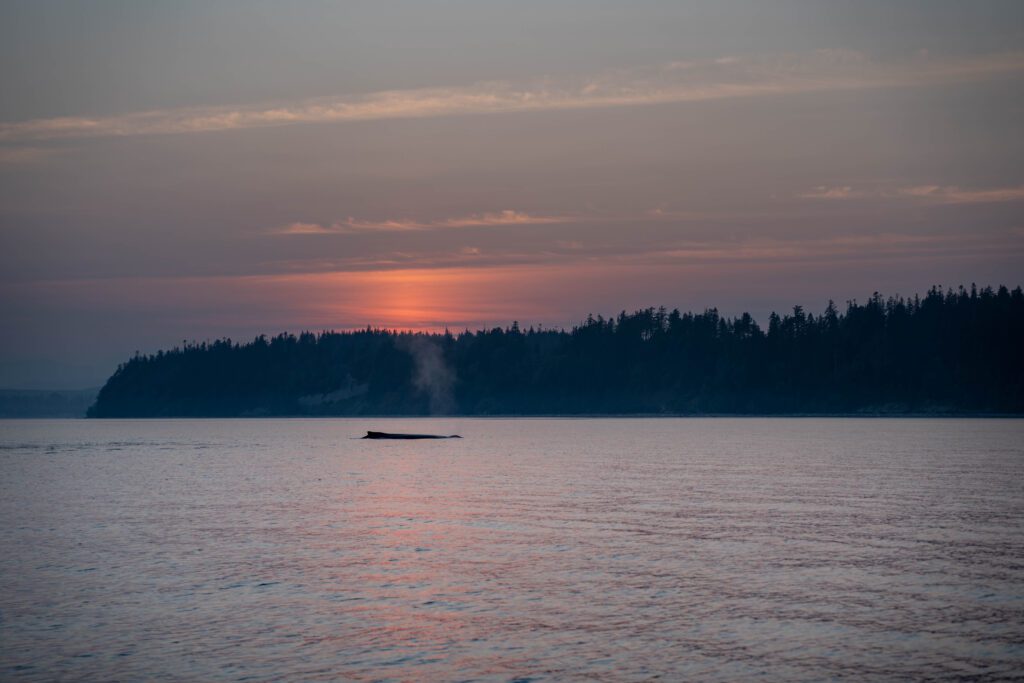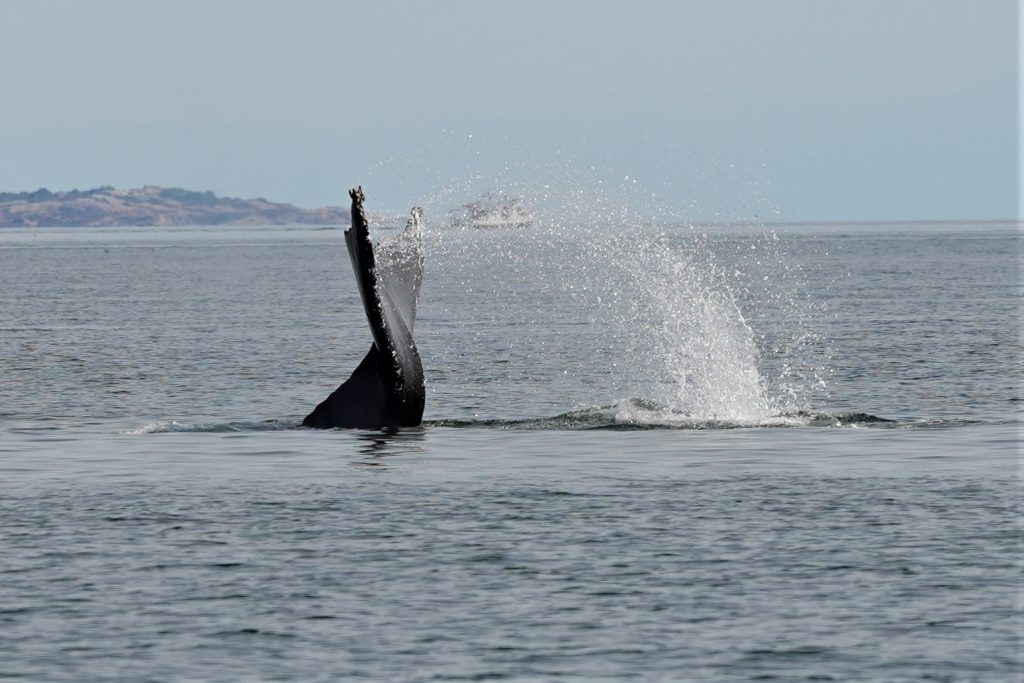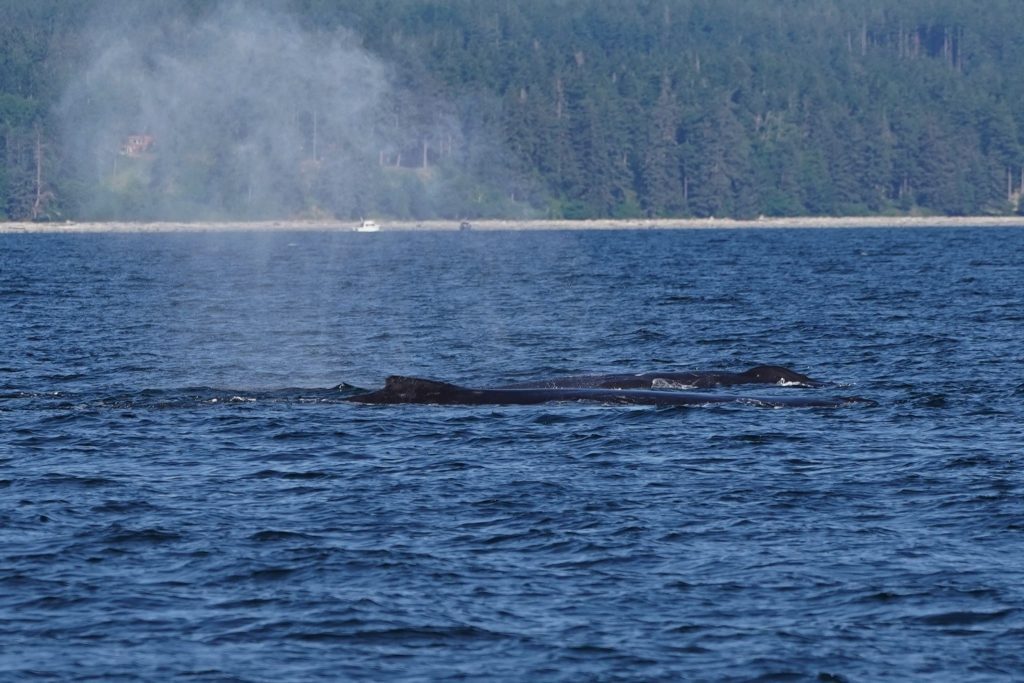Humpback Whales
Latin name: Megaptera novaeangliae
Homalco (ayʔaǰuθɛm) Name: Qʷ̓ənɛs, pronounced [kwan-ness]
Majestic humpback whales are found in many of the world’s oceans, and due to the staggered nature of their migration, they may be found year-round in the waters around Vancouver and Vancouver Island.
As the fifth-largest whale in the world, humpbacks can grow to an estimated 17m in length and weigh 40 thousand kilograms or more. The largest one ever found clocked in at 27m long and 90 metric tons!
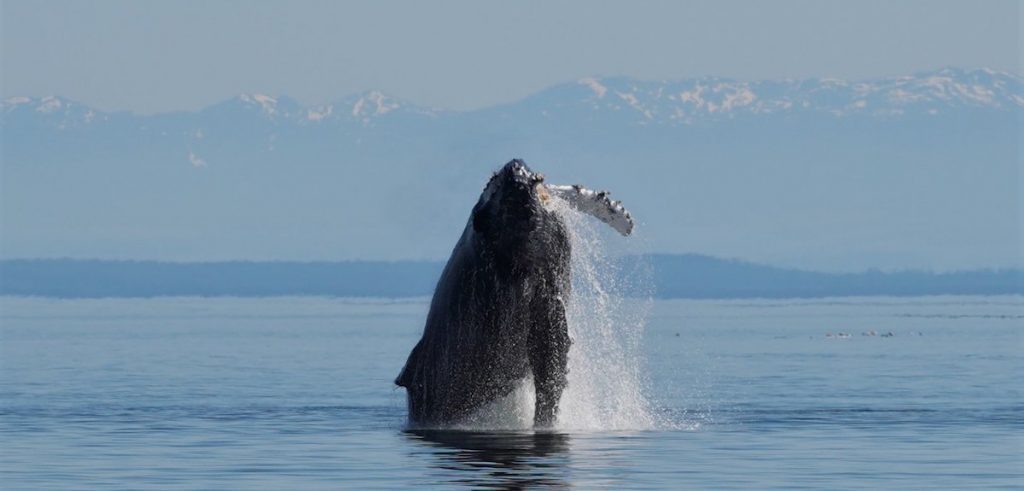
How To Identify a Humpback Whale
When spotting humpback whales, look for their stout, dark-grey bodies, long pectoral fins, and small but distinct dorsal fins. They are well known for their beautiful tail flukes, which have unique shapes and serrations along the trailing edge.
Humpbacks are some of our favourite whales on our Vancouver Island whale watching tours. They are very social, travelling in small to medium-sized groups (especially on breeding grounds). They are also known to be very vocal whales, with males singing during breeding seasons and social interactions.

Humpback Whale Migration, Breeding, and Diets.
Humpback whales are strongly migratory, spending the winter in tropical breeding grounds and colder water-feeding grounds. They usually breed in Hawaii, Mexico and Central America and come to BC, Washington, and Alaska to feed.
Calves spend the first year of their lives travelling with their mother up to northern feeding grounds and then head back to the breeding grounds the following winter. After a year with their mother, they will separate from her and sometimes join with other juvenile whales for another year and a full cycle of migration. Humpbacks reach maturity around nine years of age and may live up to 80 or more years!
Humpback whales tend to feed on small schooling animals, such as copepods, herring, and krill in their feeding grounds. Krill seems to be their favourite food and makes up 90% of their diet, which can be a whopping 2500kg/day! They have the most diverse range of feeding strategies of all known baleen whales and use different strategies depending on the prey density, whale numbers, environmental conditions and more.
Humpback Whale Conservation Efforts
Humpbacks face many threats, including historical whaling that drastically reduced their population, entanglement in fishing gear and vessel strikes. Despite these threats, humpback populations appear to be growing the Committee on the Status of Endangered Wildlife in Canada still considers them “threatened”.
As a member of the North Island Marine Mammal Stewardship Association (NIMMSA), we are committed to creating a positive balance between human activities and the health of the local marine ecosystem including that of humpback whales. Learn more about our conservation efforts.


